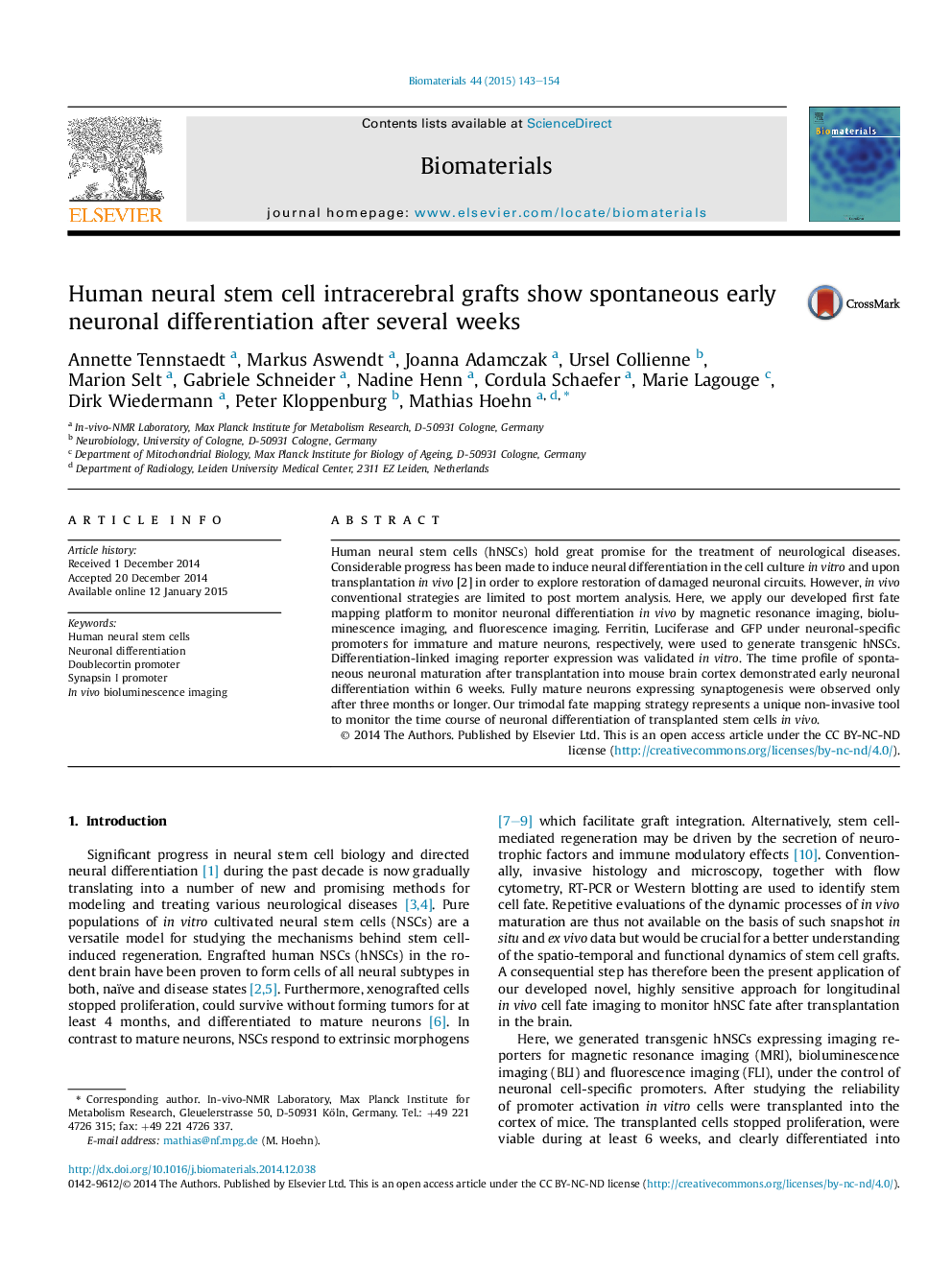| Article ID | Journal | Published Year | Pages | File Type |
|---|---|---|---|---|
| 6486219 | Biomaterials | 2015 | 12 Pages |
Abstract
Human neural stem cells (hNSCs) hold great promise for the treatment of neurological diseases. Considerable progress has been made to induce neural differentiation in the cell culture in vitro and upon transplantation in vivo [2] in order to explore restoration of damaged neuronal circuits. However, in vivo conventional strategies are limited to post mortem analysis. Here, we apply our developed first fate mapping platform to monitor neuronal differentiation in vivo by magnetic resonance imaging, bioluminescence imaging, and fluorescence imaging. Ferritin, Luciferase and GFP under neuronal-specific promoters for immature and mature neurons, respectively, were used to generate transgenic hNSCs. Differentiation-linked imaging reporter expression was validated in vitro. The time profile of spontaneous neuronal maturation after transplantation into mouse brain cortex demonstrated early neuronal differentiation within 6 weeks. Fully mature neurons expressing synaptogenesis were observed only after three months or longer. Our trimodal fate mapping strategy represents a unique non-invasive tool to monitor the time course of neuronal differentiation of transplanted stem cells in vivo.
Related Topics
Physical Sciences and Engineering
Chemical Engineering
Bioengineering
Authors
Annette Tennstaedt, Markus Aswendt, Joanna Adamczak, Ursel Collienne, Marion Selt, Gabriele Schneider, Nadine Henn, Cordula Schaefer, Marie Lagouge, Dirk Wiedermann, Peter Kloppenburg, Mathias Hoehn,
